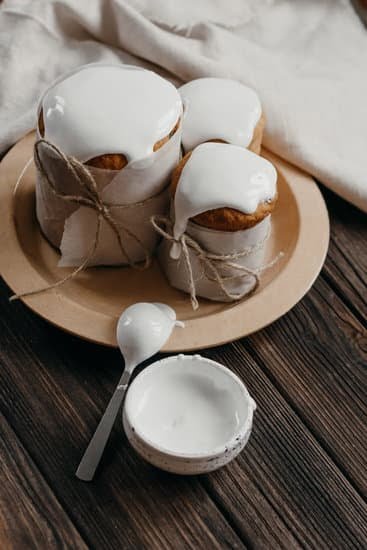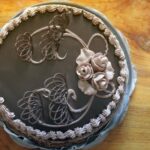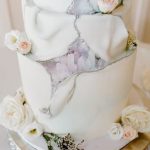Decorative flowers have long been a staple in cake decorating, adding a touch of beauty and sophistication to any confectionary masterpiece. And while there are many techniques for creating these floral adornments, using fondant can take your cake designs to the next level of elegance.
In this article, we will explore how to make decorative flowers for cakes from fondant, providing step-by-step instructions, tips, and tricks to help you create stunning floral designs that will leave everyone in awe.
Fondant is a pliable icing-like substance that can be rolled out and used to cover cakes or mold into various shapes and designs. It is made from a mixture of sugar, water, gelatin, vegetable shortening, and flavorings.
The smooth finish and versatility of fondant make it the perfect medium for creating intricate flower petals, leaves, and other decorative elements. By using fondant to craft your floral decorations, you can achieve a professional-looking finish that adds an extra level of elegance to any cake.
To begin your journey into the world of fondant flowers, you will need some essential tools and materials. A fondant rolling pin will help you roll out the fondant evenly and achieve the desired thickness for your flowers. Flower cutters come in various shapes and sizes specifically designed for creating different types of blossoms.
Additionally, icing colors allow you to customize the color of your flowers, adding vibrancy and depth to your design. These are just a few examples of the tools and materials you will need, but do not worry – we will cover everything in detail as we progress through this article.
Join us as we delve deeper into understanding the basics of fondant in the next section. We will explore its ingredients and why it is commonly used for cake decoration.
By gaining a better understanding of this versatile medium, you will feel more confident as we move forward with our journey towards creating beautiful decorative flowers from fondant. So let’s get started and unlock your creativity with fondant flowers that will elevate your cake designs to a whole new level.
Understanding the Basics of Fondant
Fondant is a versatile and popular ingredient in cake decorating, known for its smooth and seamless finish. It is a type of icing that is pliable and can be shaped into various designs, making it perfect for creating decorative flowers on cakes. In this section, we will delve into the basics of fondant, including what it is, its ingredients, and why it is commonly used for decorating cakes.
Fondant is made from a mixture of sugar, water, and glucose or corn syrup. Its main ingredient is sugar, which gives it its sweet taste and malleable texture. The addition of glucose or corn syrup helps to prevent the fondant from drying out too quickly and allows for more flexibility when working with it.
One of the reasons why fondant is commonly used for decorating cakes is its smooth finish. Unlike buttercream icing, which can have visible imperfections such as air bubbles or uneven surfaces, fondant provides a flawless canvas for cake decorators. It allows for clean lines and sharp edges, making it ideal for creating intricate designs like decorative flowers.
When using fondant to decorate cakes, it’s important to note that there are two types: rolled fondant and poured fondant. Rolled fondant is the more commonly used type and can be rolled out thinly to cover entire cakes or molded into different shapes like flowers. Poured fondant has a thinner consistency and is usually used to create a glaze or coating on pastries.
| Pros | Cons |
|---|---|
| Smooth and seamless finish | Can be more challenging to work with than other cake decorating mediums |
| Versatile and malleable for creating intricate designs | Can be more expensive compared to other types of icing |
| Allows for clean lines and sharp edges | Dries out quickly if not stored properly or handled correctly |
Essential Tools and Materials
Making decorative flowers from fondant requires a specific set of tools and materials. These essentials are necessary to ensure that you can create beautiful, intricate designs that will elevate the appearance of your cake. Here is an introduction to the necessary tools and materials needed for making decorative flowers from fondant:
Fondant Rolling Pin
A fondant rolling pin is an essential tool for working with fondant. Unlike a traditional rolling pin, a fondant rolling pin has a non-stick surface and guides with different thicknesses to achieve the ideal consistency when rolling out your fondant.
Flower Cutters
Flower cutters come in various shapes and sizes and are specifically designed for cutting out petals and leaves for your fondant flowers. These cutters create clean, uniform shapes that make it easier to assemble your flowers.
Icing Colors
Icing colors or gel food coloring are used to tint the fondant to achieve the desired color for your flowers. It is best to use gel food coloring as it does not alter the consistency of the fondant. Remember to start with small amounts and gradually add more color until you achieve the desired shade.
Ball Tool Set
A ball tool set consists of different sizes of metal balls on each end of a wooden or plastic handle. This tool is used to thin and shape the edges of your petals, giving them a natural, realistic look.
Veining Tools
Veining tools are used to add veins and texture to the petals and leaves of your fondant flowers. They come in different shapes and sizes, allowing you to create various vein patterns for different flower types.
These are just some of the essential tools and materials needed for making decorative flowers from fondant. As you gain experience and explore different techniques, you may find that additional tools such as flower molds, gum paste, and edible dusts become useful in achieving more intricate designs. Having the right tools will not only make the process easier but also help you achieve professional-looking results.
Preparing the Fondant
To create beautiful and realistic decorative flowers for cakes, it is crucial to prepare the fondant properly. The ideal consistency of fondant for making flowers should be soft, pliable, and easy to work with. Here are step-by-step instructions on how to knead and soften the fondant to achieve this perfect texture:
- Start by gathering all your fondant and tools in a clean workspace. It’s advisable to work on a smooth surface like a silicone mat or marble slab that has been lightly dusted with powdered sugar or cornstarch.
- Begin with small amounts of fondant at a time to make it easier to manage and prevent drying out. Cut off a palm-sized piece of fondant from the larger batch.
- Before starting to knead, roll the piece of fondant into a ball shape between your palms. This will help prevent any air bubbles from forming during the kneading process.
- Using the heel of your hand, press down firmly onto the ball of fondant and push it away from you in one fluid motion. This action helps stretch the fondant and make it more pliable.
- Fold the stretched fondant back onto itself and repeat the pressing and stretching motion several times. Continue this process until the fondant becomes soft, smooth, and elastic-like in texture.
- If at any point during kneading you notice that the fondant is sticky, you can lightly dust your hands with powdered sugar or cornstarch to prevent sticking.
- If, on the other hand, you find that the fondant is too dry and crumbly, add tiny amounts of shortening or glycerin to it while kneading until it becomes softer and more manageable.
Once you have achieved the ideal consistency for your fondant by following these steps, you are ready to start creating beautiful decorative flowers for your cake.
Shaping Different Types of Flowers
One of the most exciting aspects of creating decorative flowers from fondant is the ability to shape different types of flowers. By mastering various techniques and using specific molds, you can bring a diverse array of blooms to life on your cakes. In this section, we will explore how to shape popular flower designs such as roses, daisies, and tulips.
Roses
To create a fondant rose, you will need a few essential tools such as a small rolling pin, petal cutters in various sizes, and a foam pad. Start by kneading your fondant until it becomes pliable and easy to work with. Take a small amount of fondant and roll it out into a thin sheet. Using the petal cutter, cut out several petals in different sizes.
Next, take one petal and gently thin out the edges using a ball tool or your fingers. Place the thinned petal on the foam pad and cup it by pressing on one side while leaving the center untouched.
Repeat this process for each additional petal, gradually layering them around the center until you achieve the desired size and shape of your rose. Finally, attach the completed rose to your cake using a small amount of water or edible glue.
Daisies
Daisies are a popular choice for cake decorations due to their simplicity and timeless appeal. To make fondant daisies, you will need daisy-shaped cutters in various sizes, along with edible food coloring if desired.
Begin by coloring your fondant with gel-based icing colors if you want any colored petals. Once you have your desired color(s), roll out the fondant until it is about ⅛ inch thick. Use the daisy-cutters to cut out several petals in various sizes.
To create dimension in your daisy petals, gently press down on them with either your fingers or a veining tool near the edges. This will give the petals a slightly curved and natural appearance. Once you have prepared all the petals, stack them on top of each other, starting with the largest at the bottom and gradually decreasing in size. Attach the completed daisy to your cake using water or edible glue.
Tulips
Tulips can add an elegant touch to any cake design, and with fondant, they are fairly easy to create. For making fondant tulips, you will need tulip-shaped cutters, a foam pad, and gum paste modeling tools for shaping and detailing.
Start by rolling out your fondant on a lightly dusted surface until it is about ¼ inch thick. Using the tulip cutter, cut out several shapes from the fondant. Place each tulip shape on the foam pad and use a ball tool or your fingers to thin out and ruffle the edges.
To create realistic folding in the petals, gently press down in two spots near the center of each petal using a veining tool or toothpick. This will give them a natural folded appearance.
Once you have shaped all your petals, stack them together vertically, with one large petal forming the outermost layer and progressively smaller ones placed inside each other. Secure them together using water or edible glue before attaching them to your cake.
Now that you know how to shape different types of flowers like roses, daisies, and tulips with fondant, you can experiment with various combinations and arrangements to create beautiful floral designs on your cakes. The possibilities are endless when it comes to decorating cakes with these stunning edible creations.
Adding Realism and Details
Once you have shaped your fondant flowers, it’s time to take them to the next level by adding realism and lifelike details. This step is crucial in creating visually stunning decorative flowers for your cakes. Thankfully, there are several techniques you can use to achieve this, including the use of edible dusts and paints.
Using Edible Dusts
Edible dusts are a fantastic way to add depth and texture to your fondant flowers. These dusts come in a variety of colors and finishes, such as metallic or matte. Here’s how you can use edible dusts:
- Dust on color: Use a dry brush to apply the dust directly onto the petals or leaves of your fondant flower.
- Mix with alcohol: Mix a small amount of edible dust with clear alcohol, such as vodka or lemon extract, to create a paste. Use a fine brush to apply this paste onto specific areas of your flower for added shading or highlighting.
- Highlighting edges: Dip a small paintbrush into the edible dust and lightly drag it along the edges of your petals or leaves. This technique helps create definition and adds dimension to your fondant flowers.
Using Edible Paints
Edible paints offer another option for adding intricate details and vibrant colors to your fondant flowers. They are available in various shades and can be applied using different brushes or sponges. Here are some tips when working with edible paints:
- Layering colors: Start with lighter shades and gradually build up darker tones by layering the paint on top of each other.
- Mixing colors: Experiment with mixing different shades together to create unique color variations for your flowers.
- Blending colors: Use a damp brush to blend different shades together for a seamless transition between colors.
- Adding accents: Use fine brushes or even toothpicks to add tiny dots, lines, or other accent details to your fondant flowers.
Remember that practice makes perfect, so don’t be afraid to experiment and try different techniques with edible dusts and paints. This will allow you to find the style that best suits your vision and helps bring your fondant flowers to life.
Assembling the Flowers on the Cake
Once you have successfully created your beautiful fondant flowers, it’s time to assemble them onto your cake. This step is crucial in achieving a visually pleasing and cohesive arrangement that will truly make your cake stand out. Here are some helpful tips and guidance on how to strategically place the fondant flowers on your cake.
- Planning the Placement: Before you start placing the flowers, take a moment to plan out where each flower will go. Consider the overall design of your cake and think about which areas would benefit from having floral accents. Keep in mind that less is more when it comes to incorporating fondant flowers into your design – overcrowding can make the cake look busy and overwhelming.
- Focal Point Placement: Choose a focal point on your cake where you want to draw attention, such as the center or top tier. This is where you can place larger or more intricate fondant flowers as a main centerpiece. Consider using different-sized flowers to create depth and dimension.
- Balance and Proportion: Achieve balance by distributing the fondant flowers evenly throughout the cake. Aim for symmetry or asymmetry, depending on the design you desire. For example, if you have placed a large flower on one side of the cake, counterbalance it with smaller flowers or foliage on the other side.
- 4.Layering Technique: To create depth and visual interest, use a layering technique by overlapping different sizes of petals or arranging multiple flowers together in clusters. This technique can add texture and dimension to your cake design.
Remember, practice makes perfect when it comes to assembling fondant flowers onto cakes. Don’t be afraid to experiment with different arrangements before making any final decisions. By considering placement, balance, proportion, and utilizing layering techniques, you can create a stunning and visually pleasing arrangement of fondant flowers on your cake.
Storing and Preserving Fondant Flowers
After putting in the effort to create beautiful decorative flowers from fondant, it is essential to know how to store and preserve them properly. By doing so, you can make these flowers ahead of time and use them for future cakes, saving you both time and effort in the long run.
To store fondant flowers, it is important to keep them in a cool, dry place away from direct sunlight. Heat and humidity can cause the flowers to soften or deform. Placing the flowers in an airtight container will help protect them from moisture and keep their shape intact. If you need to stack multiple layers of flowers, place parchment paper between each layer to prevent sticking.
Another way to preserve fondant flowers is by using edible preservatives such as gum paste or tylose powder. These additives enhance the stiffness of the fondant, making the flowers more durable and less prone to breakage. Simply knead a small amount of gum paste or tylose powder into your fondant before shaping it into flowers. This will ensure that your creations stay firm even after drying.
If you plan on keeping your fondant flowers for an extended period of time, consider storing them in an airtight container with silica gel packets or rice. The silica gel packets help absorb any excess moisture that might still be present, while rice works similarly by absorbing moisture in its surrounding environment. Place the container with the flowers in a pantry or cupboard where they won’t be disturbed.
By following these storage and preservation tips, you can confidently make fondant flowers ahead of time without worrying about their quality being compromised. With this knowledge, you now have the ability to plan out your cake decorations well in advance and have stunning fondant flowers ready whenever you need them.
Troubleshooting and Common Mistakes
Making decorative flowers from fondant can be a fun and rewarding experience, but it’s not without its challenges. As a beginner, it’s common to come across certain issues that may affect the outcome of your fondant flowers. However, with a little understanding and the right techniques, you can easily overcome these obstacles. In this section, we will address some common problems that beginners may encounter while making fondant flowers and provide helpful solutions to rectify these issues.
One issue that beginners often face is sticky or tacky fondant. This can make it difficult to work with, resulting in misshapen or messy flowers. To resolve this problem, make sure to properly knead and soften the fondant before shaping your flowers. If the consistency is still too sticky, try adding small amounts of powdered sugar or cornstarch to dry it out slightly. Remember to do this gradually to avoid over-drying the fondant.
Another common mistake is using too much pressure when shaping the flowers, leading to unwanted creases or deformities. Applying even and gentle pressure is crucial for achieving smooth and seamless petals in your fondant flowers. If you notice any imperfections after shaping, you can use a fondant smoother or your fingertips lightly dampened with water to smooth out any creases or bumps.
Additionally, color fading can occur when using certain types of food coloring on fondant flowers. It’s important to choose high-quality gel-based food colors specifically designed for use with fondant to avoid this issue. If you notice any fading after drying your flowers, you can touch up the colors using additional food coloring applied with a small brush.
By addressing these common mistakes and troubleshooting tips, beginners can achieve better results when making decorative flowers from fondant. Don’t be discouraged if you encounter any issues along the way. Remember that practice makes perfect, and with time, you’ll become more skilled at creating beautiful fondant flowers for your cakes.
Conclusion
In conclusion, learning how to make decorative flowers for cakes from fondant allows you to add a touch of elegance and beauty to your baked creations. By embracing your creativity and experimenting with different types of flowers and techniques, you can create stunning and unique designs that will impress your friends, family, and clients.
Throughout this article, we have discussed the basics of fondant and the essential tools and materials needed for making decorative flowers. We have also explored step-by-step instructions on preparing the fondant, shaping different types of flowers, adding realism and details, assembling the flowers on the cake, as well as storing and preserving fondant flowers.
It is important to remember that practice makes perfect when it comes to working with fondant. Don’t be discouraged if your first attempts don’t turn out exactly as you imagined. With time and patience, you will improve your skills and create more intricate and beautiful designs.
So go ahead and let your imagination soar. Try out different flower designs, experiment with color combinations, play around with textures, and don’t be afraid to think outside the box. The possibilities are endless when it comes to creating decorative flowers from fondant.
By following the techniques outlined in this article and allowing yourself to be inspired by the beauty of nature, you can unleash your inner artist and create cakes that are truly works of art. Whether you’re baking for a special occasion or simply expressing your creativity in the kitchen, using fondant to make decorative flowers will surely elevate your cakes to a whole new level.
So have fun exploring this delightful craft and enjoy the rewards of seeing your creations come to life.
Frequently Asked Questions
How do you make a flower out of fondant?
To make a flower out of fondant, you will first need to prepare your fondant by kneading it until it is smooth and pliable. Next, roll out the fondant to your desired thickness using a rolling pin on a clean, non-stick surface. Use flower-shaped cutters or freehand cutting techniques to create the petals and leaves for your flower. Gently shape and mold each piece to give it dimension and texture, using tools such as ball tools or foam pads.
Assemble the petals together, one by one, using edible glue or water to secure them in place. It is important to let each layer dry and set before adding more on top to prevent the petals from sagging. Once all the layers are attached and dried, you can add additional details such as centers or veining using edible paints or dusts.
How far in advance should you make fondant flowers?
The timing for making fondant flowers depends on various factors such as the complexity of the design, environmental conditions, and personal preferences. Generally, it is recommended to start making fondant flowers at least several days in advance of when they are needed for a cake decoration. This allows sufficient drying time and ensures that the flowers will hold their shape when placed on the cake.
Simple designs may only require 24-48 hours of drying time, while more intricate or larger flowers may take up to a week or longer to fully dry and harden. Remember to store the finished flowers in a cool, dry place away from direct sunlight until ready to use.
How do you get fondant flowers to stick to a cake?
Getting fondant flowers to stick securely onto a cake can be achieved through several methods depending on personal preference and the condition of your cake’s surface. Before attaching the flowers, ensure that the cake has been properly covered with a thin layer of buttercream icing or ganache to provide a sticky surface for adhering the fondant decorations. Additionally, you can also brush water or edible glue onto the backside of the fondant flower or the area where it will be placed on the cake.
Press the flowers gently onto the cake, holding them in place for a few seconds to allow them to adhere firmly. For added support, consider inserting toothpicks or floral wire into the base of larger flowers and inserting them securely into the cake.

Welcome to our cake decorating blog! My name is Destiny Flores, and I am the proud owner of a cake decorating business named Cake Karma. Our mission is to provide delicious, beautiful cakes for all occasions. We specialize in creating custom cakes that are tailored specifically to each customer’s individual needs and tastes.





